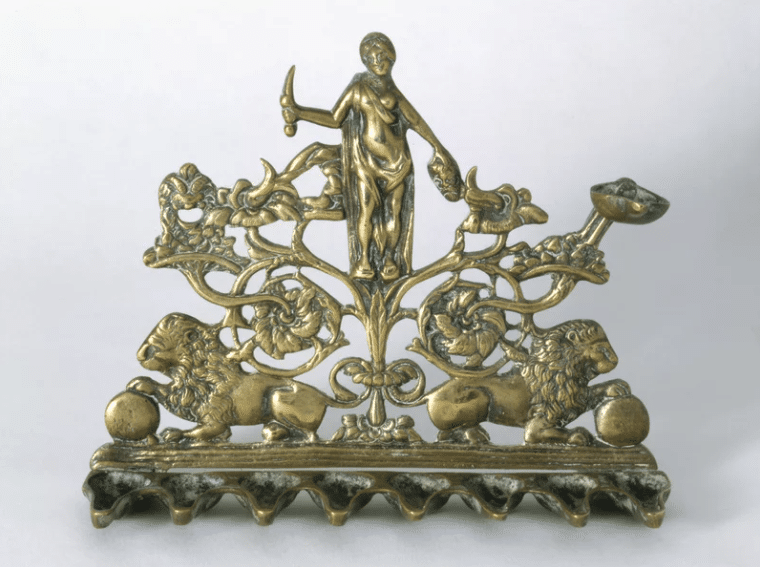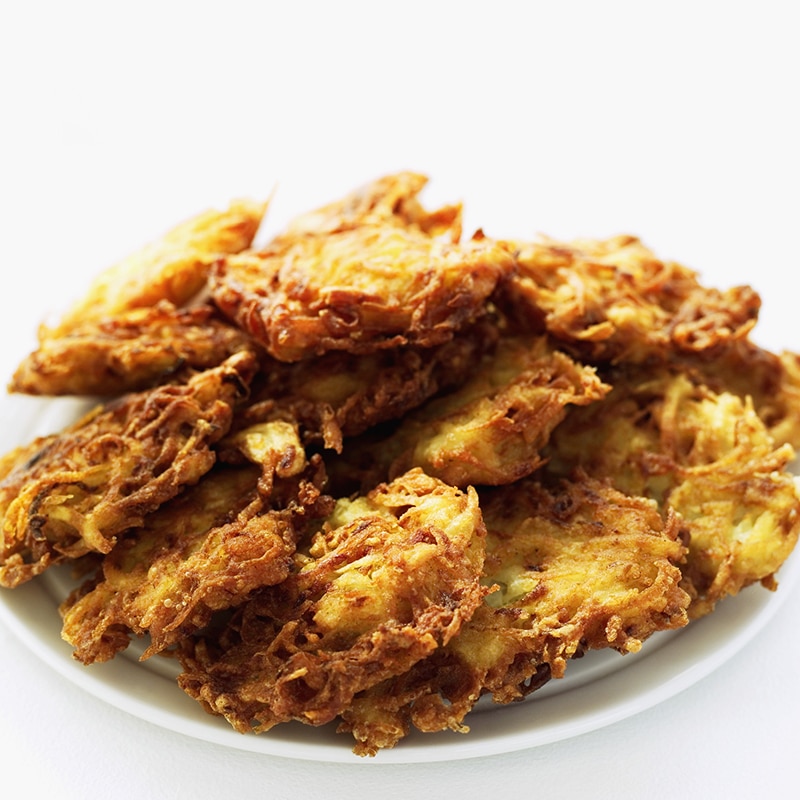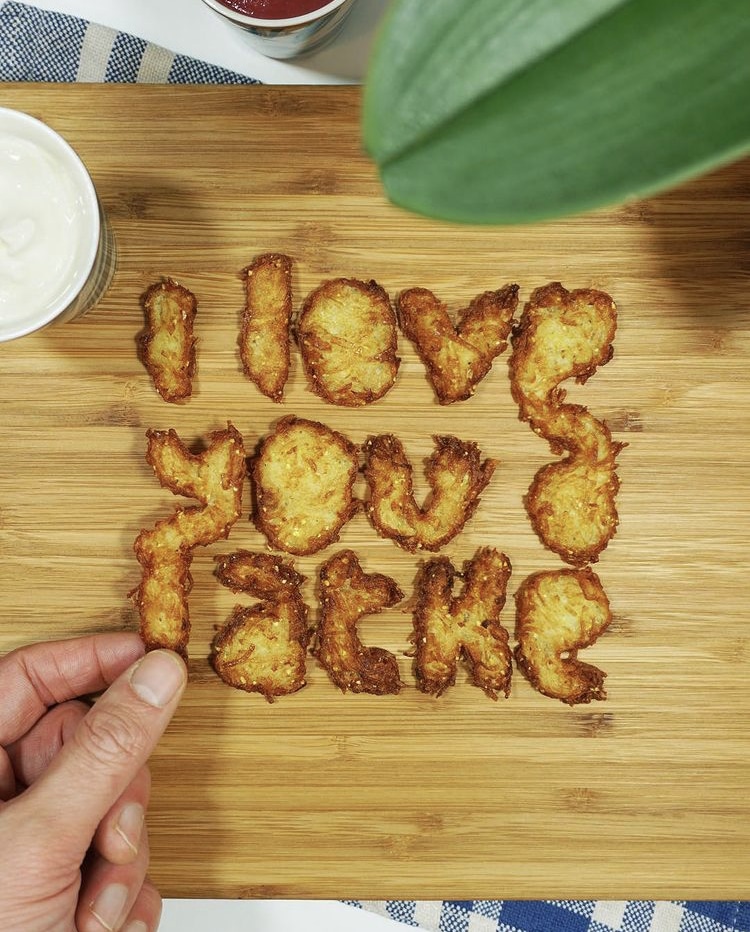
It’s latke season which means it’s time to stuff ourselves with all of our favorite versions of these fried until perfectly golden snacks.
Latkes are the Hanukkah food because on top of the endless variations that you can make, we all seem to have very strong opinions on not only how to make them but also on how to serve them as well.
The first documented appearance

There are an incredible amount of latke recipes out there. In fact, some form of a fried pancake has been served up on Jewish tables since the Middle Ages. The first documented Hanukkah pancake arrived on the Jewish food scene at the table of an Italian rabbi named Kalonymus ben Kalonymus (c. 1286-1328).
According to The Encyclopedia of Jewish Food by Gil Marks, Kalonymus “included pancakes in a list of dishes to serve at an idealized Purim feast, as well as a poem about Hanukkah. After the Spanish expelled the Jews from Sicily in 1492, the exiles introduced their ricotta cheese pancakes, which were called cassola in Rome, to the Jews of northern Italy. Consequently, cheese pancakes, because they combined the two traditional types of foods–fried and dairy–became a natural Hanukkah dish.”
These pancakes were fried in honor of the miracle of the oil in the Hanukkah story, but the first Hanukkah pancakes were dairy for two main reasons. First, the potato didn’t make its way to Europe until long after Christopher Columbus’ journey to America in 1492; and second, in honor of the sixth century B.C.E Jewish heroine Yehudit (Judith).
Yehudit’s salty cheese and sharp blade

As the tale goes, Yehudit saved her village of Bethulia in Israel from an invading Assyrian army with the help of some strong wine, salty cheese and a little elbow grease. The “beautiful widow” served the army’s general so much wine and cheese that he eventually passed out. Once passed out, Yehudit beheaded the general with his own sword, a moved that inspired the Israelite army to victoriously attack.
Although Hanukkah is not mentioned in the story at all, and the Book of Judith never made it into the Tanakh, starting around the Hasmonean dynasty (140 B.C.E to 37 B.C.E) it became popular to recite the story on the Shabbat of Hanukkah– a tradition that continued into the Middle Ages. Due to this tradition of reading the story of Yehudit many people still associate eating dairy with Hanukkah (even if retelling the story isn’t as popular in modern times).
Enter the potato (and apple sauce)

Potato latkes are a relative newcomer to Jewish history, only arriving on the scene around the 19th century in Eastern Europe after the popularization of potatoes. The actual word “latke” is Yiddish for pancake, the origin is believed to come from the East Slavic word for “small fried pancake.”
Nobody can really agree on what a “traditional” latke recipe is and recipes over the years have taken on regional preferences. Some recipes call for flour, others no flour. Some recipes call for onion, others say no onion.
One thing we do know is that early recipes called for frying in schmaltz (rendered poultry fat) which is the main reason why we don’t see as many dairy pancakes these days (kosher dietary rules ban the mixing of dairy and meat). This is the same reasoning why it’s also believed apple sauce made its way to the Hanukkah table, on top of apples being non-dairy (and found in abundance in Europe) they worked well with the traditional meat heavy dinners served on Shabbat.
Our love for the latke

One of the main reasons why I think we have so many opinions on how to make latkes is due to the fact that they are so versatile and invoke good memories. The recipe I use is a variation of my grandmother’s, a Czech recipe, which it turns out were a tad too oily according to my mother (I remember them being delicious despite what my mom says, must be the nostalgia hence why I defend the Czech way every year).
Speaking to versatility, the evolution of the latke is only continuing. Today, it’s very easy to find potato alternative fried pancakes.
As for toppings, beyond the heated sour cream versus apple sauce debate, there’s also ketchup and endless other non-traditional toppings. Last year, I hosted a latke, cheap caviar and champagne Hanukkah party with my Covid pod. (Latkes and caviar are a very popular item at the famous Russ & Daughters Cafe.)

No matter where you fall on the latke debate, one thing will always remain constant— they are an important part of celebrating Hanukkah and are guaranteed to inspire (instigate) a conversation or two at your holiday table.
Crispy traditional potato pancakes
PrintIngredients
- 2 lbs russet (baking) or Yukon Gold potatoes
- 1 large egg
- 1 medium onion
- salt and freshly ground pepper to taste
- ½ cup chopped scallions, including the green part
- Vegetable oil for frying
Instructions
- Peel the potatoes and put in cold water. Using a grater or a food processor coarsely grate the potatoes and onions. Place together in a fine-mesh strainer or tea towel and squeeze out all the water over a bowl. The potato starch will settle to the bottom; reserve that after you have carefully poured off the water.
- Mix the potato and onion with the potato starch. Add the scallions, egg, and salt and pepper.
- Heat a griddle or non-stick pan and coat with a thin film of vegetable oil. Take about 2 tablespoons of the potato mixture on the griddle, flatten with a large spatula, and fry for a few minutes until golden. Flip the pancake over and brown the other side. Remove to paper towels to drain. Serve immediately. You can also freeze the potato pancakes and crisp them up in a 350-degree oven at a later time.
Notes
Originally Published Nov 19, 2021 12:02AM EST


